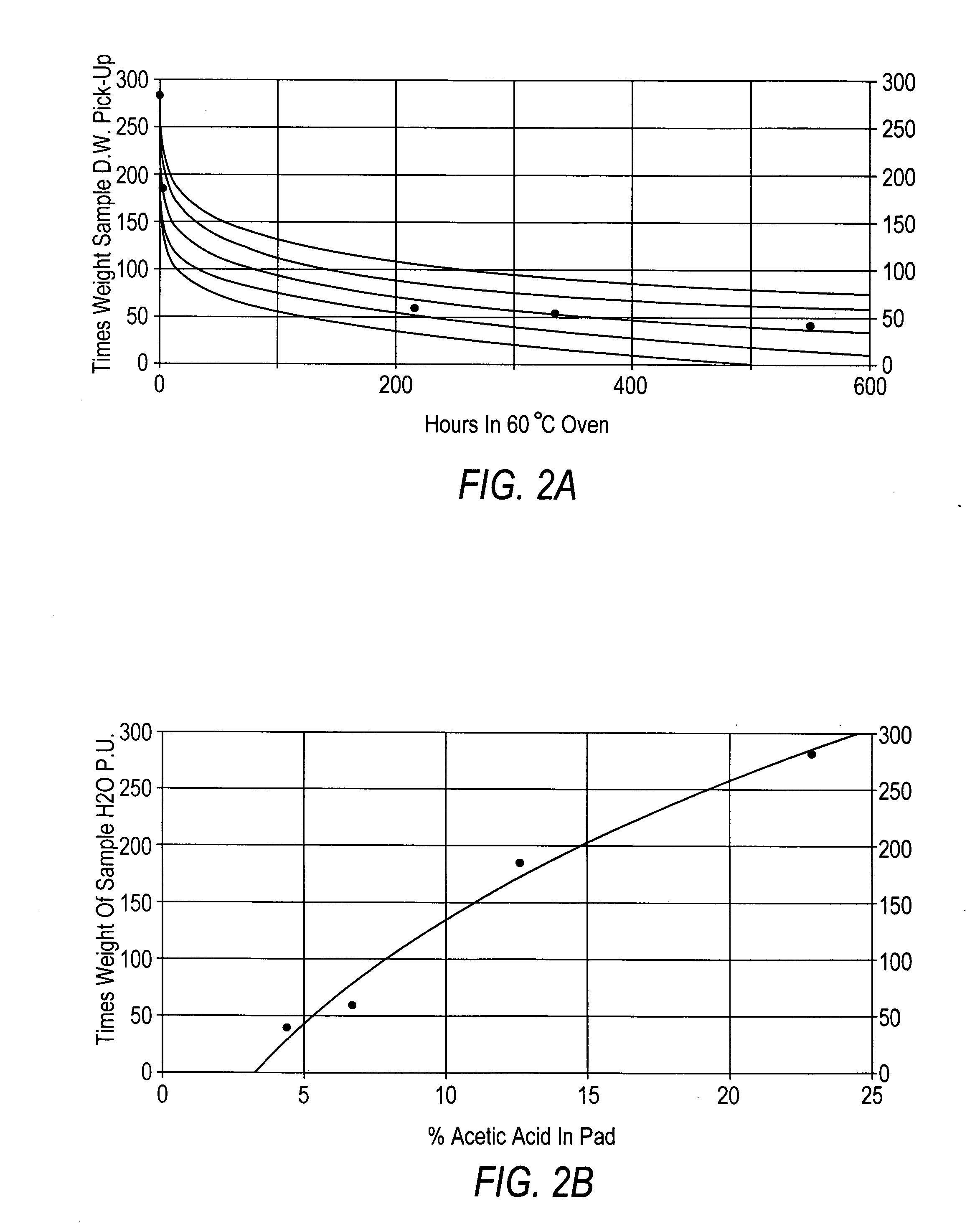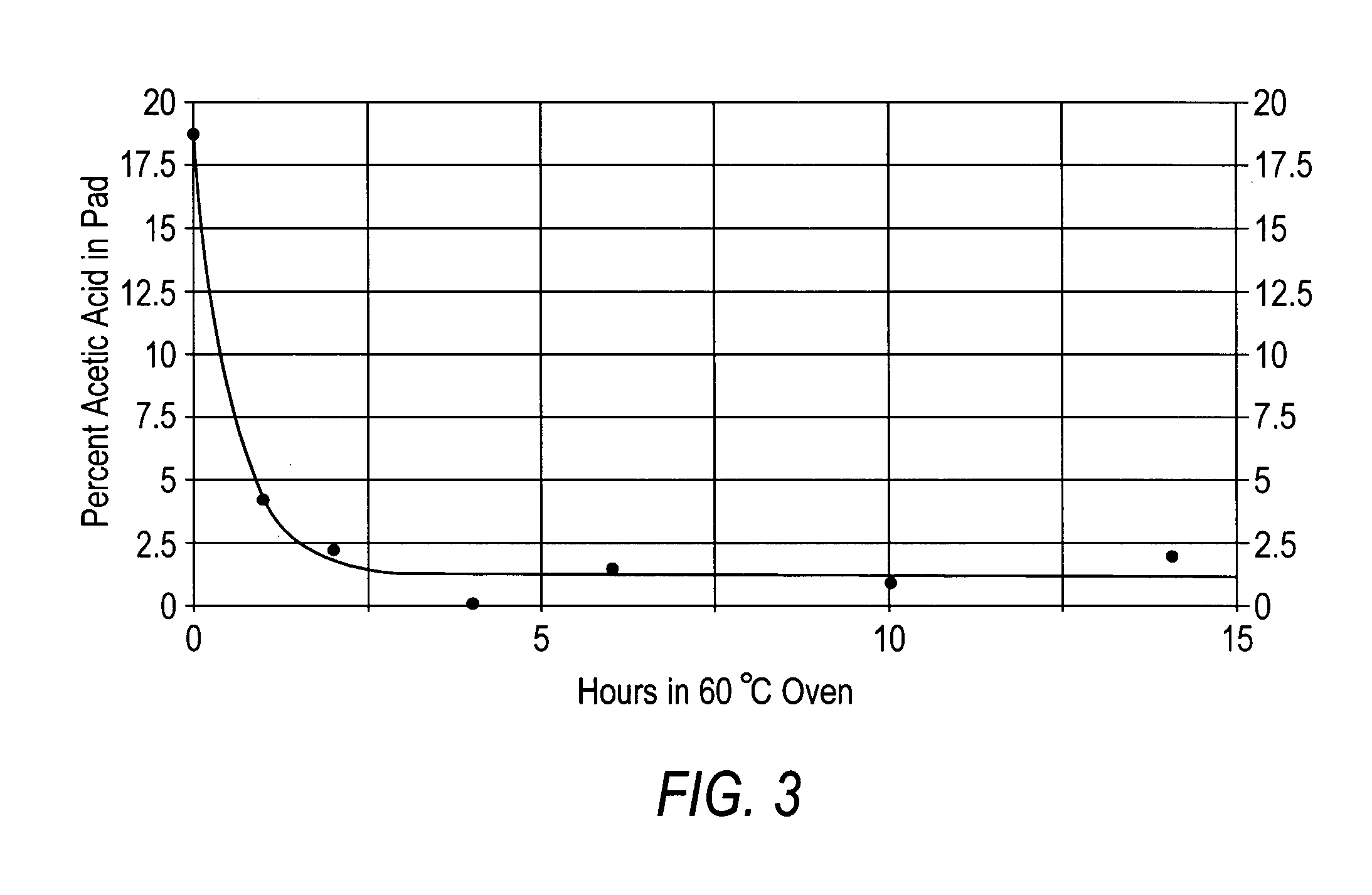Compositions of alpha- and beta-chitosan and methods of preparing them
a technology of alpha and beta chitosan, which is applied in the field of alphaand beta chitosan and, can solve the problems of swelling and eventual dissolution, limited commercial application, and inability to readily derived natural polymers from abundant renewable biological sources
- Summary
- Abstract
- Description
- Claims
- Application Information
AI Technical Summary
Benefits of technology
Problems solved by technology
Method used
Image
Examples
example 1
[0068] Preparation of α-chitosan acetate pads. Chitosan acetate pads derived from various sources were prepared by dissolving 1 g of dry chitosan in 1 g of glacial acetic acid (volatile acid) and 98 g of distilled water, the mixture was then poured into 4×4 inch plastic moulds to a depth of 0.25 inches. The samples were then frozen at −20° C. and freeze-dried at 30×10−3 millibars for 18 hours. The resulting chitosan pads contained from between about 20% to about 1% acetic acid and from between about 20% to about 1% water, wherein the remainder of the material was chitosan. The pads were then annealed at 60° C. for a selected amount of time, e.g., 0, 1, 2, 3, 4, and 25 hours.
[0069]FIG. 1 shows the loss of moles of acetic acid per mole of chitosan by heating the chitosan acetate pads at 60° C. for varying times. FIG. 2A illustrates the relationship between heating the chitosan-acetate sample at 60° C. for various times and water absorption, while FIG. 2B shows the relationship betwee...
example 2
[0070] Absorption of fetal bovine serum and sodium chloride from chitosan-acetate pads. Chitosan acetate pads were generally prepared according to Example 1. Ten samples of freeze-dried chitosan acetate pads as described in Table 3 were tested and fetal bovine serum absorption was reported.
TABLE 3Characteristics and serum absorption forchitosan acetate pads.Fetal BovineSerummolesAbsorptionSampleacetic(x increaseSam-Descriptionacid / in mass ofMolecularple(Opeliomolesof chitosan%Weight / No.crab)chitosanacetate pad)Deacetylation10001vc 9 / 12-10.5850.1794.00159.202vc 9 / 12-30.4848.5494.00159.20310 9 / 20-00.7045.3088.00105.60410 9 / 20-20.5641.0088.00105.60510 9 / 20-10.5640.2088.00105.60610 9 / 20-30.5539.7088.00105.6079 9 / 20-00.8540.0086.90106.3089 9 / 20-10.6238.9086.90106.3099 9 / 20-30.6338.2086.90106.30109 9 / 20-20.6835.2086.90106.30
The variables and quantities in Table 3 were then used to derive an equation to predict the ability of the chitosan pad to absorb fetal bovine serum. The times or f...
example 3
[0074] Effect of additional acetic acid on absorption of chitosan-acetate pads. Chitosan acetate pads were prepared by dissolving Opelio crab chitosan (2 g) in 196 mL of 2% acetic acid, freeze-drying the sample for 16.5 hours at 33×10−3 mbars at −48° C., heating the sample in a 65° C. oven for 24.25 hours, and soaking the samples in a 0.15 M sodium chloride for 10 minutes. The chitosan-acetate pad was then removed and weighed resulting in a 35.91 g increase in pad weight. One mL of distilled water containing 0.002 g of acetic acid was added to this treated sample. After equilibrating the sample for 5 minutes, the sample was then added to a weighing dish containing 0.15 M saline. The sample expanded and become colorless and upon re-weighing, the sample pad was 87.25 times the weight of the original sample without the addition of saline. The above process was repeated on two additional chitosan-acetate samples. The first sample pad yielded an original saline absorption of 42.77 times ...
PUM
| Property | Measurement | Unit |
|---|---|---|
| mole ratio | aaaaa | aaaaa |
| mole ratio | aaaaa | aaaaa |
| mole ratio | aaaaa | aaaaa |
Abstract
Description
Claims
Application Information
 Login to View More
Login to View More - R&D
- Intellectual Property
- Life Sciences
- Materials
- Tech Scout
- Unparalleled Data Quality
- Higher Quality Content
- 60% Fewer Hallucinations
Browse by: Latest US Patents, China's latest patents, Technical Efficacy Thesaurus, Application Domain, Technology Topic, Popular Technical Reports.
© 2025 PatSnap. All rights reserved.Legal|Privacy policy|Modern Slavery Act Transparency Statement|Sitemap|About US| Contact US: help@patsnap.com



